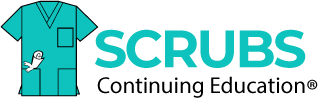If you’ve ever considered a career in the medical arena, you’ve probably looked at several options. Consider radiography. Millions of people need x-rays and CT scans daily for diagnoses and treatments. The average pay for computed tomography technologists is around $42,034 to $74,840.
Computed Tomography is one of the fastest advancing imaging technologies. Today most CT systems are capable of “spiral” (also called “helical”) scanning as well as scanning in the formerly more conventional “axial” mode. In addition, many CT systems are capable of imaging multiple slices simultaneously. Such advances allow relatively larger volumes of anatomy to be imaged in relatively less time. Another advancement in the technology is electron beam CT, also known as EBCT. Although the principle of creating cross-sectional images is the same as for conventional CT, whether single- or multi-slice, the EBCT scanner does not require any moving parts to generate the individual “snapshots.” As a result, the EBCT scanner allows a quicker image acquisition than conventional CT scanners.
It may seem like a simple procedure, but operating a CT scanner can be a complicated and require technical and scientific expertise. Luckily the computed tomography certification will help ensure that you gain the skill set needed to pursue this well-paying career.
What Is CT?
Although also based on the variable absorption of x rays by different tissues, computed tomography (CT) imaging, also known as “CAT scanning” (Computerized Axial Tomography), provides a different form of imaging known as cross-sectional imaging. A CT scan takes multiple images from different angles to provide a much more detailed picture of the body. The origin of the word “tomography” is from the Greek word “tomos” meaning “slice” or “section” and “graphe” meaning “drawing.” A CT imaging system produces cross-sectional images or “slices” of anatomy, like the slices in a loaf of bread. The cross-sectional images are used for a variety of diagnostic and therapeutic purposes.
They are used to diagnose conditions in the body and to locate smaller objects in the body that might not be picked up an x-ray such as kidney stones or tumors.
The patient lies flat on their back and is slowly pushed through the archway of the machine as if they are in a tunnel. Each scan takes about 5-20 minutes, depending on the exam ordered.
What Do You Need to Get a Computed Tomography Certification?
A CT certification is a post-primary certification. This means to take the exam; you must have first completed:
- An associate or higher degree
- A primary course in radiology as approved by the ARRT® (American Registry of Radiologic Technologists®)
- CPR certification
Clinical Experience
One of the requirements for qualifying as a registered CT radiographer is completing clinical experience. ARRT® requires the technologist to perform 125 procedures on a CT scanner, fully documented.
Fifty-nine different procedures are listed, and candidates must perform 25 of them as part of their total of 125. You must perform and document all 25 procedures between 3 or 5 times.
You cannot perform any procedure more than once on a patient; the patients must all be different even if the patient needs scans in multiple parts of their body in the same session.
Of the 59 different procedures, there are six different types, A, B, C, D, E and F. These are: head, spine and musculoskeletal, neck and chest, abdomen and pelvis, additional procedures, image display, and post-processing and finally quality assurance.
What You Need to Document and Show
For each one of the procedures, you need to be able to document and prove that you can do the following:
- Evaluate medical records
- Prepare the room for the examination of the patient
- Correctly identify the patient
- Assess that the patient understands the procedure
- Ensure you have the patient’s correct medical history
- Prepare contrast media
- Position the patient on the CT machine correctly
- Effectively carry out protocol position and parameter selection
- Carry out the scan effectively
- Display a good quality image correctly and archive it
- Document the procedure according to the guidelines of the hospital patient medical records
- Discharge the patient, ensuring he or she understands post-procedure guidelines, if applicable
- Carry out appropriate safety procedures in regard to radiation
Structured Learning
In addition to clinical experience and providing documentation of the results, candidates for the post-primary CT certification must satisfy structured education as part of the CT certification requirements.
The technologist is required to complete 16 hours of structured education which includes patient care, image production, and radiation safety.
Challenge Yourself to Get a Computed Tomography Certification
There can be no denying that there is a lot of work that goes into a computed tomography certification. The requirements to get the certification are high, but so are the rewards. The course requires an associate or higher degree. This requires lots of self-discipline and the ability to listen and respond to feedback.
But if you are sure that you want to become a radiographer specializing in CT, then it will all be worth in the end. There is nothing more fulfilling in life than knowing you have helped a patient on their road to diagnosis or recovery. You could save someone’s life.
If you want to learn more about the low-cost radiology programs we offer, be sure to click here for more information.

Recent Comments